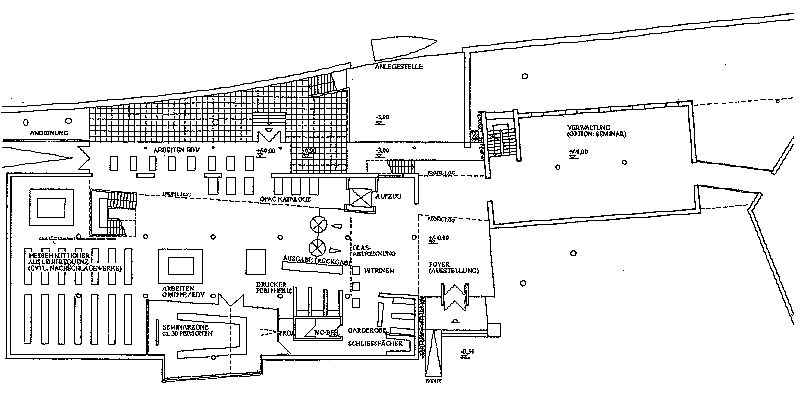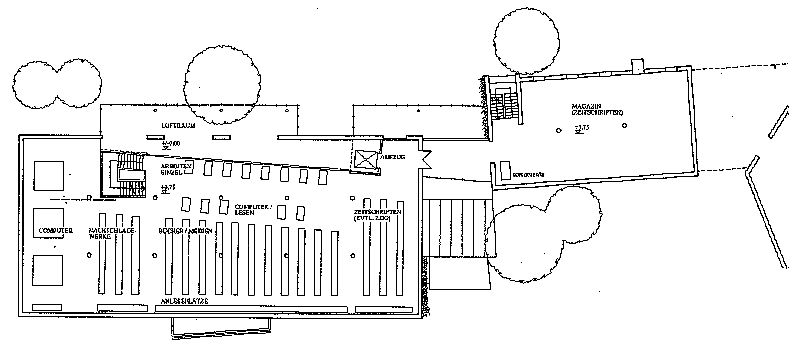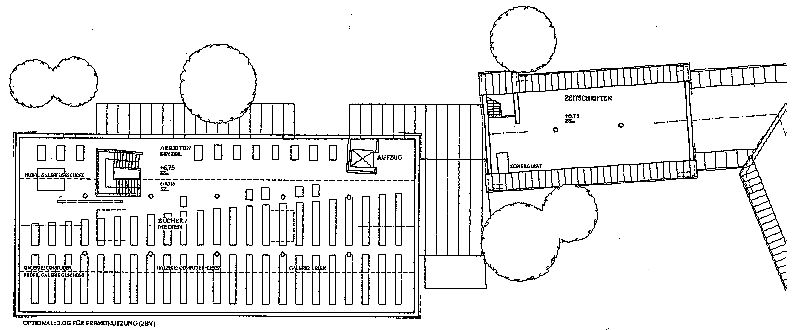THE IDEA OF THE KNEIPHOF LIBRARY
The overall objective of the Kneiphof-Library will contain easy access to a modern stock of literature of scientific subjects and international view, preservation of valuable books and information about the history of the region, the Wallenrodtsche Library and other scientific goals.
The stock of scientific literature gives an attractivity for scientists and students to move to Königsberg and some surrounding places to continue studies and scientific work and starting and continuing cooperative work.
As there are different programs for younger youth in progress, this can be a good supplement.
Putting instruments of high technology for information retrieval into this place, it will also serve as a network communicator for guests and residents.
The city and the university Albertina has been a highly acknowledged institution since 1544. It was one of the first places to open libraries to the public. There were famous personalities teaching and working, if we remember Kant, Bessel, Hoffmann, Mitscherlich, Kollwitz and many others.
The agricultural intensity and success and for instance the horse breeding in Trakenen were at high standards. So the history of the land, its culture and its literature are to be preserved in this region. As all former inhabitants have been driven out of the region around Königsberg, there are no personal connections to history (Pruzzian, Hugenots, Salzburger, Germans, Dutch, Jews, Scandinavians and others).
There are historic books and documents spread in other places, that might return to Königsberg. The collection of books, called „ Wallenrodtsche Bibliothek” is partly still in the „ Staatliche Universität Kaliningrad” and might also be preserved in the „ Kneiphof Library” .
THE SITE OF THE KNEIPHOF LIBRARY
As a result of war and some decisions of the last five decades, the Kneiphof contains only the Cathedral with Kant’s grave. At this location the building of the old university formed an optical unity with the Cathedral and was part of a cultural system. One side of the windows lead the view out to a bank of the river Pregel.
The building shall show the character of the old form, but be a hull for a modern and simple interior. The plans for construction have been developed by Jochen Brandi and Elmar Mittler with the help of Andrey Derbenkow and Wenzel Salachow.
The building planned provides room for about 150,000 books, that promise to be a start-up supply. There are zones also for computers to serve with information and connections. There are also bookshelves for high frequency books, some encyclopedia, and rooms for group sessions. The basement will be used for achievement and storage of technical equipment and may be an access to the Pregel river. In the first floor bookshelves will dominate together with working places and computer stations. A magazin for periodicals shall also be stationed in this floor. The second floor is also used mainly for bookshelves.
Prof. Dr. Jürgen Bloech
Platz der Göttinger Sieben
3 37073 Göttingen, Germany
Tel: +49 551 397257

Figure 1: Ground plan ground floor

Figure 2: Ground plan 1st floor

Figure 3: Ground plan 2nd floor